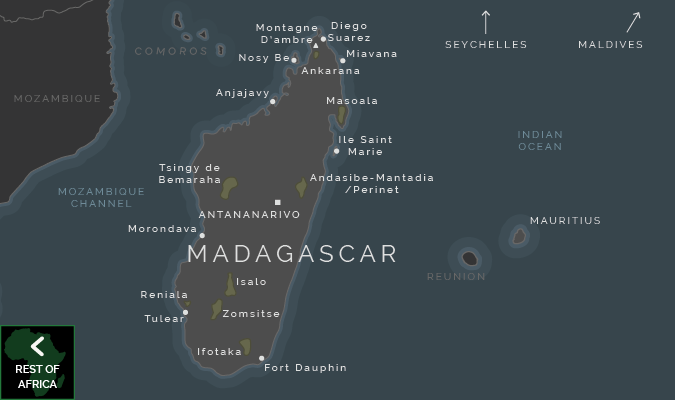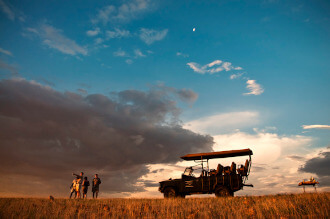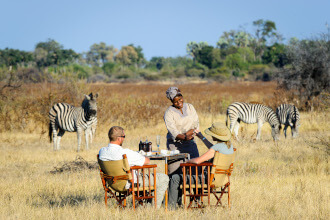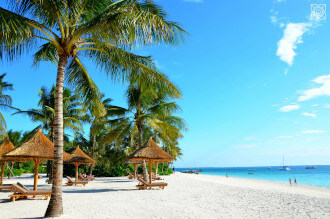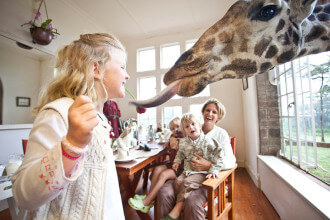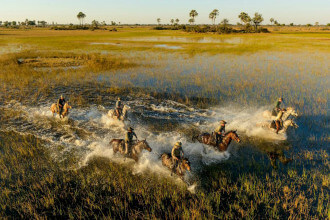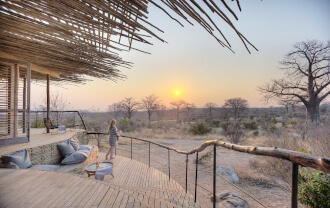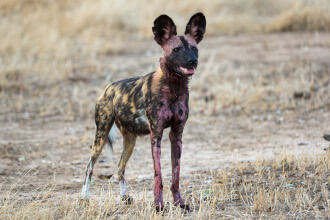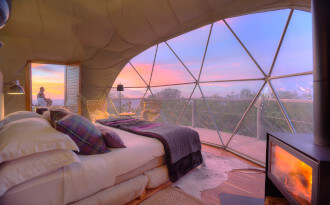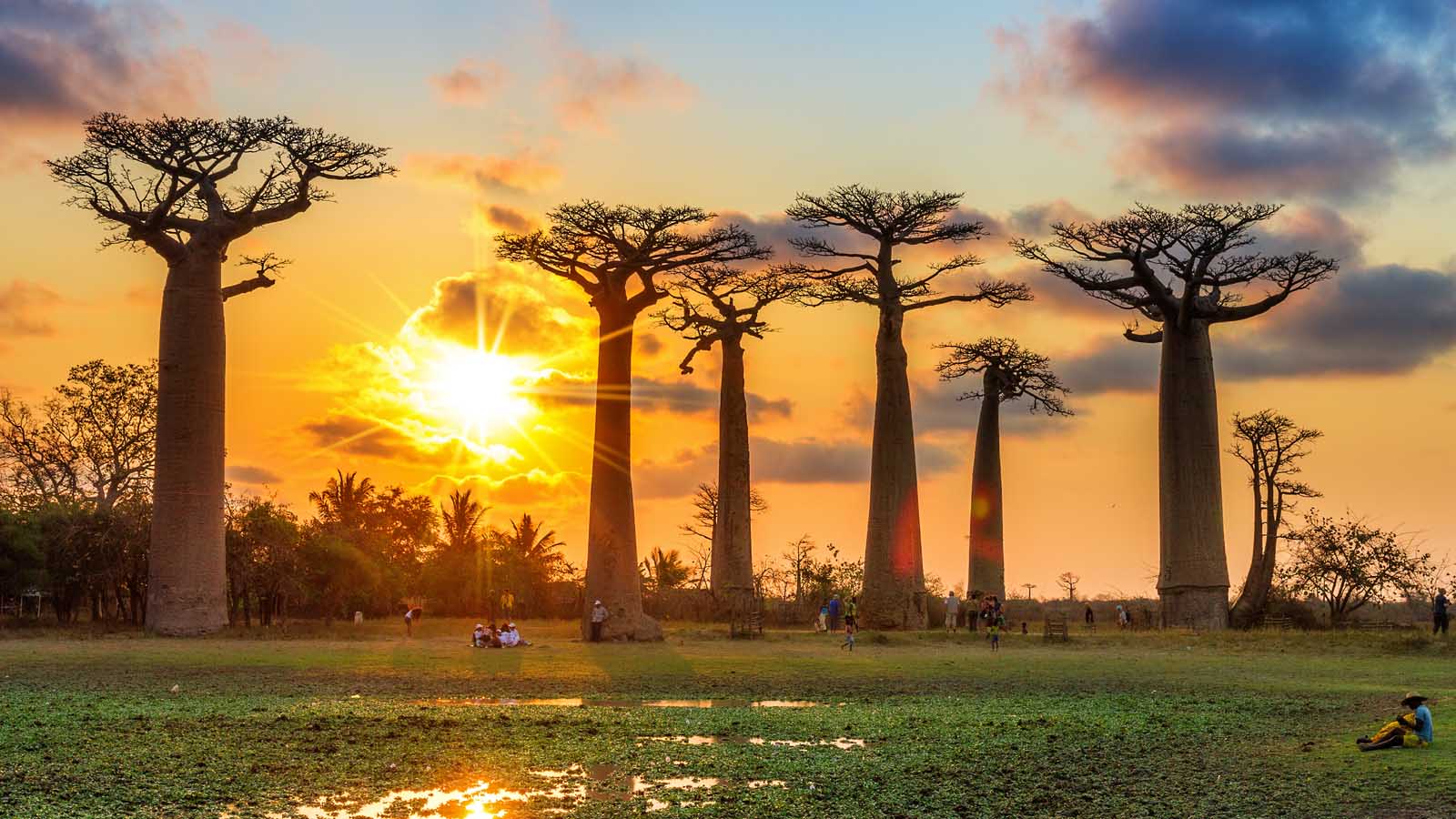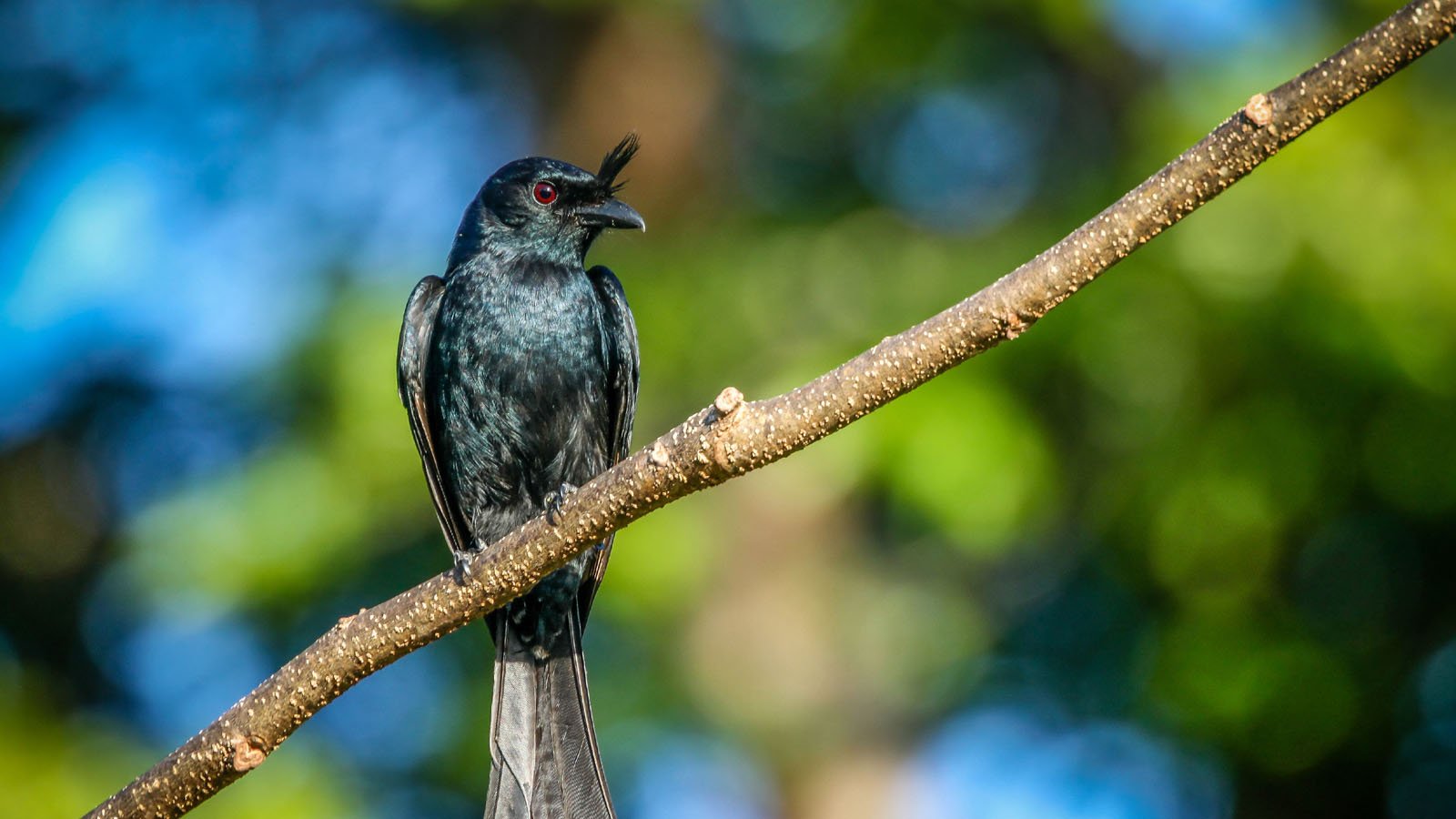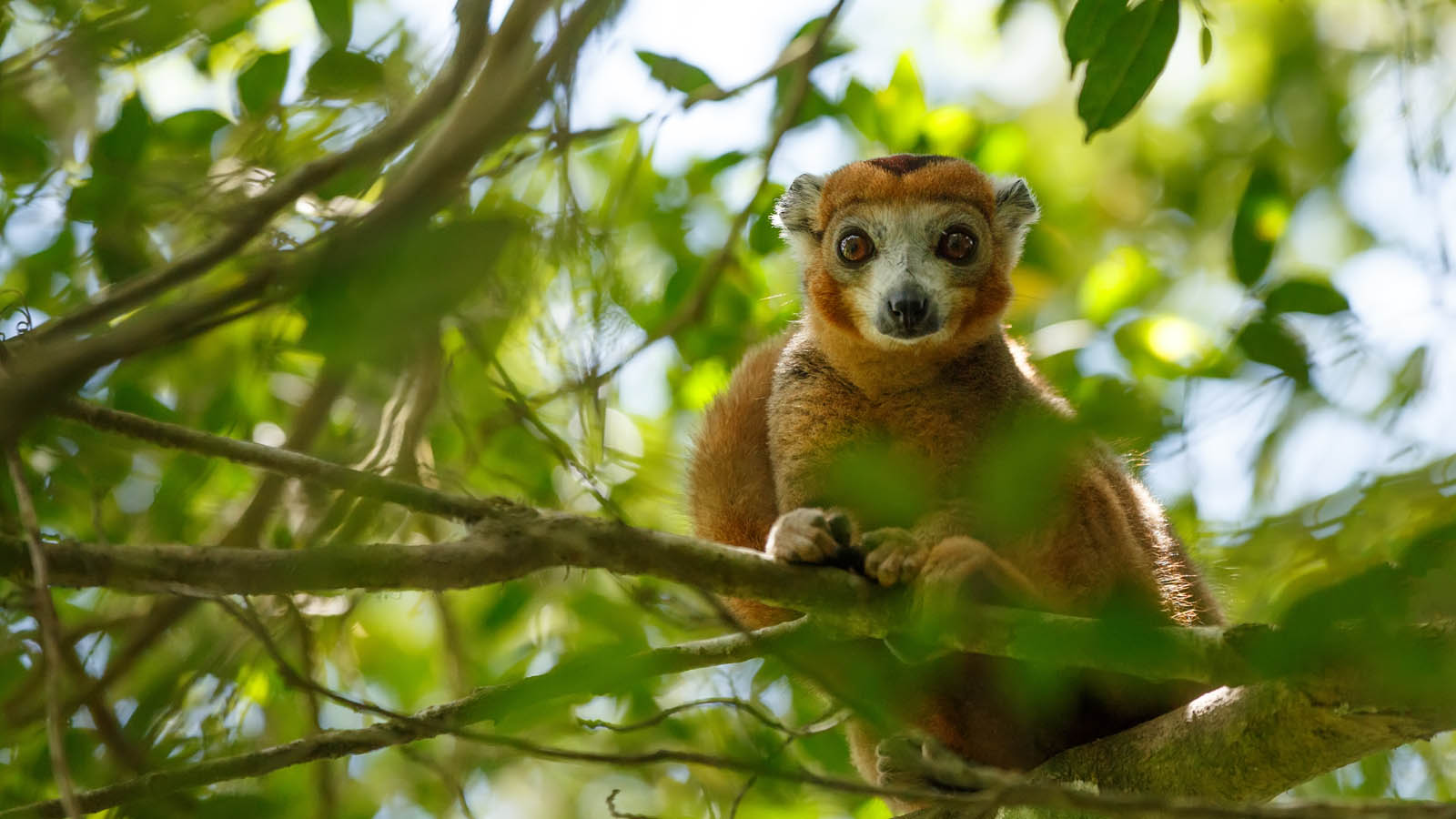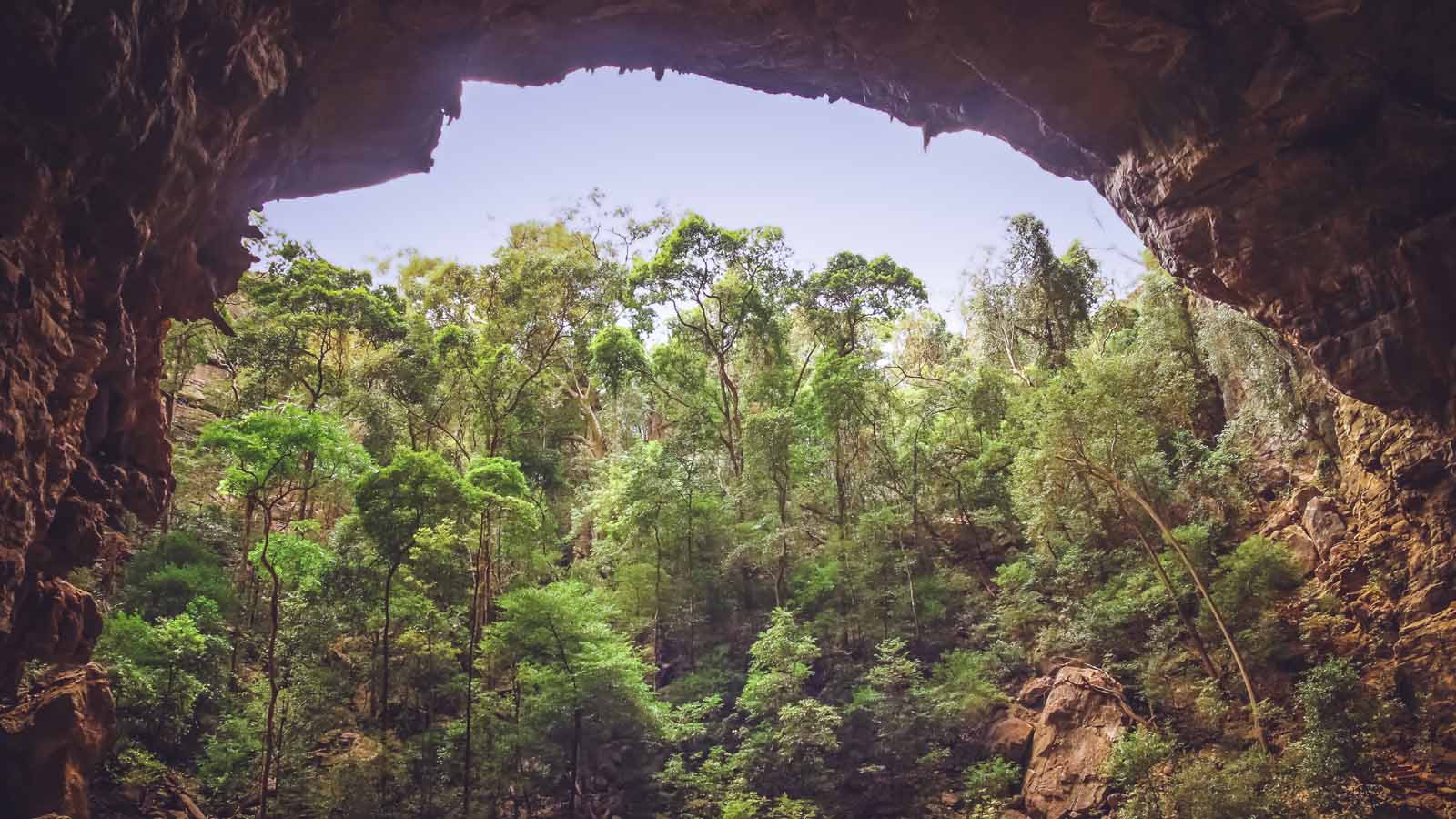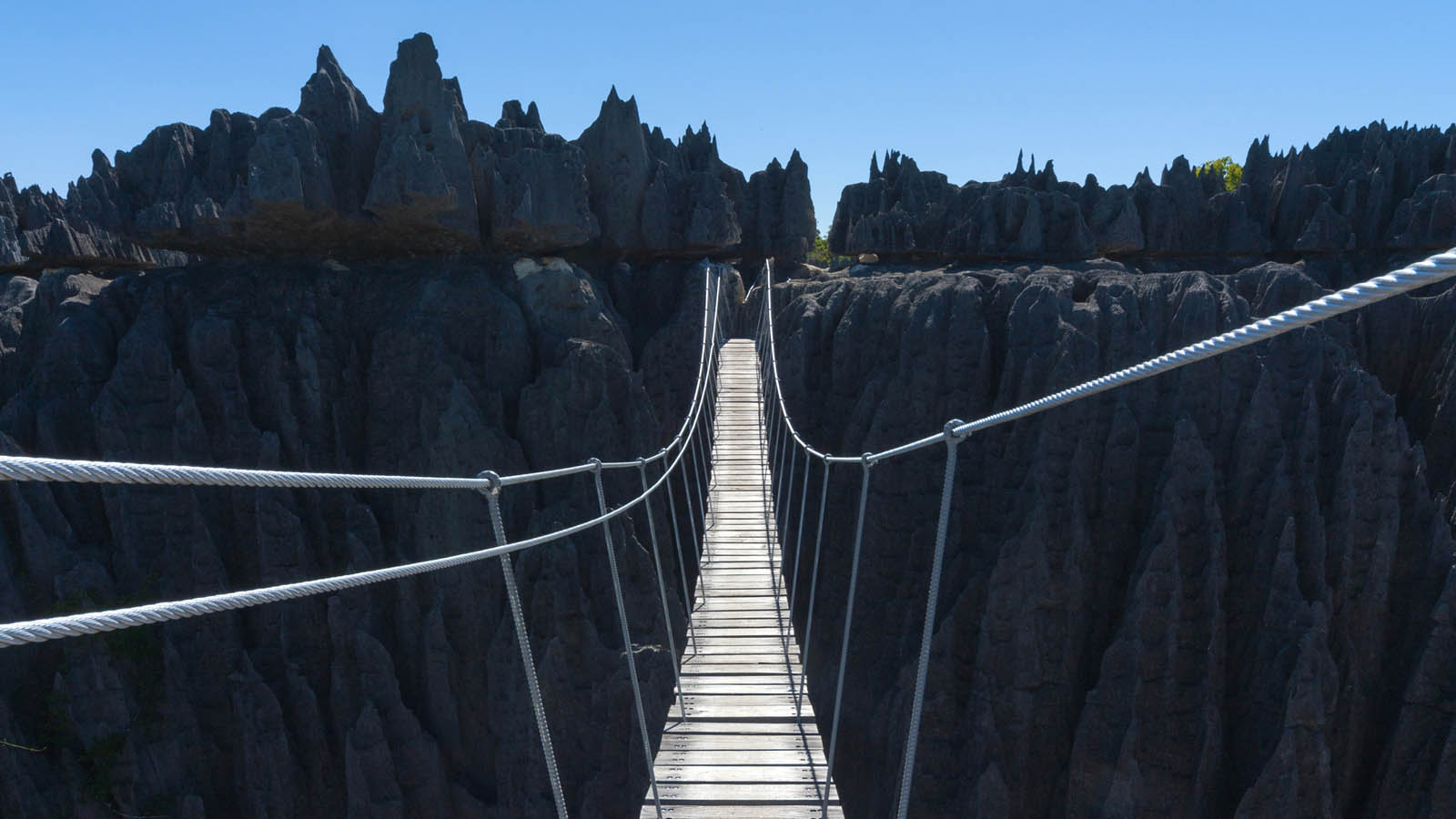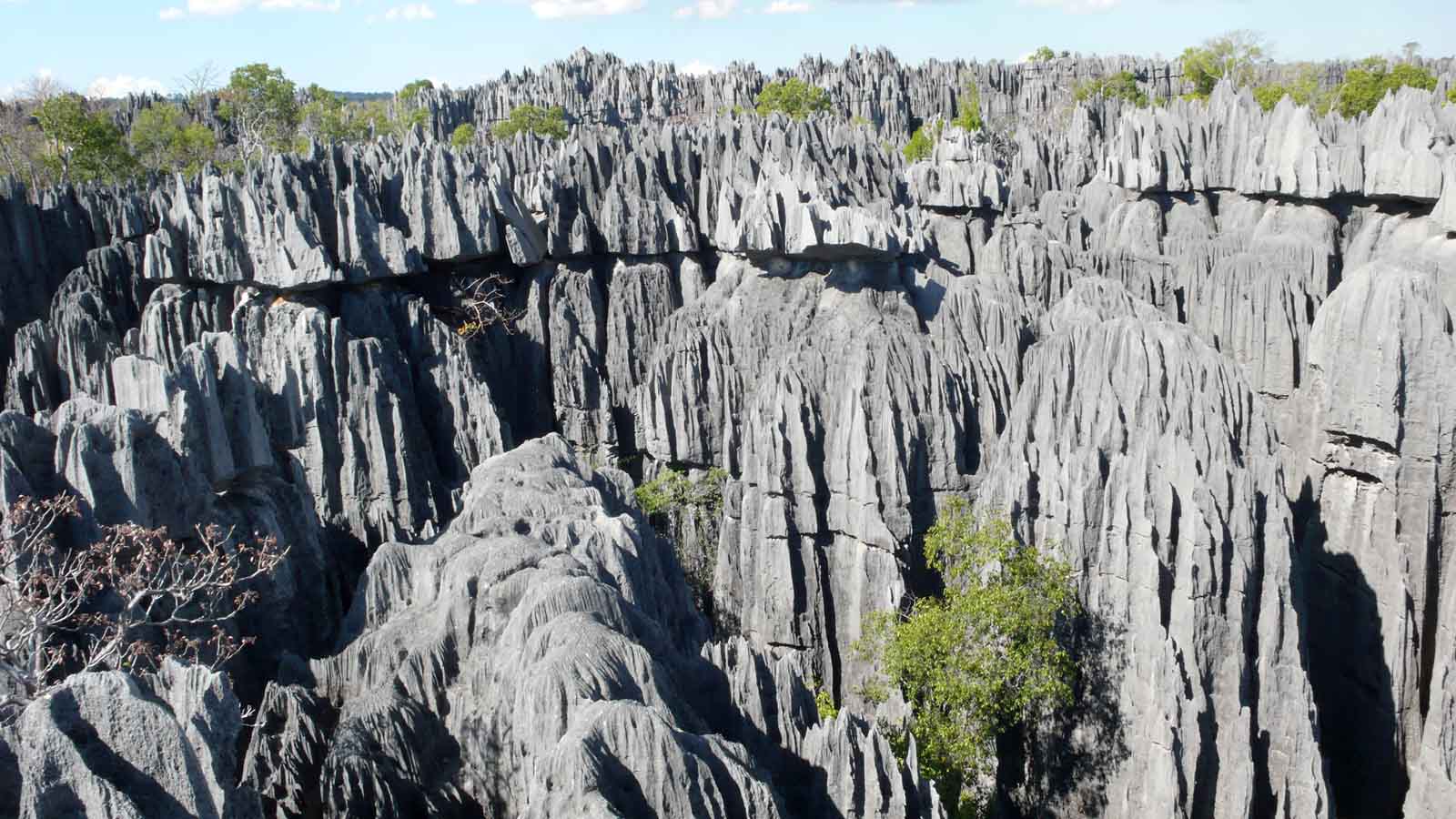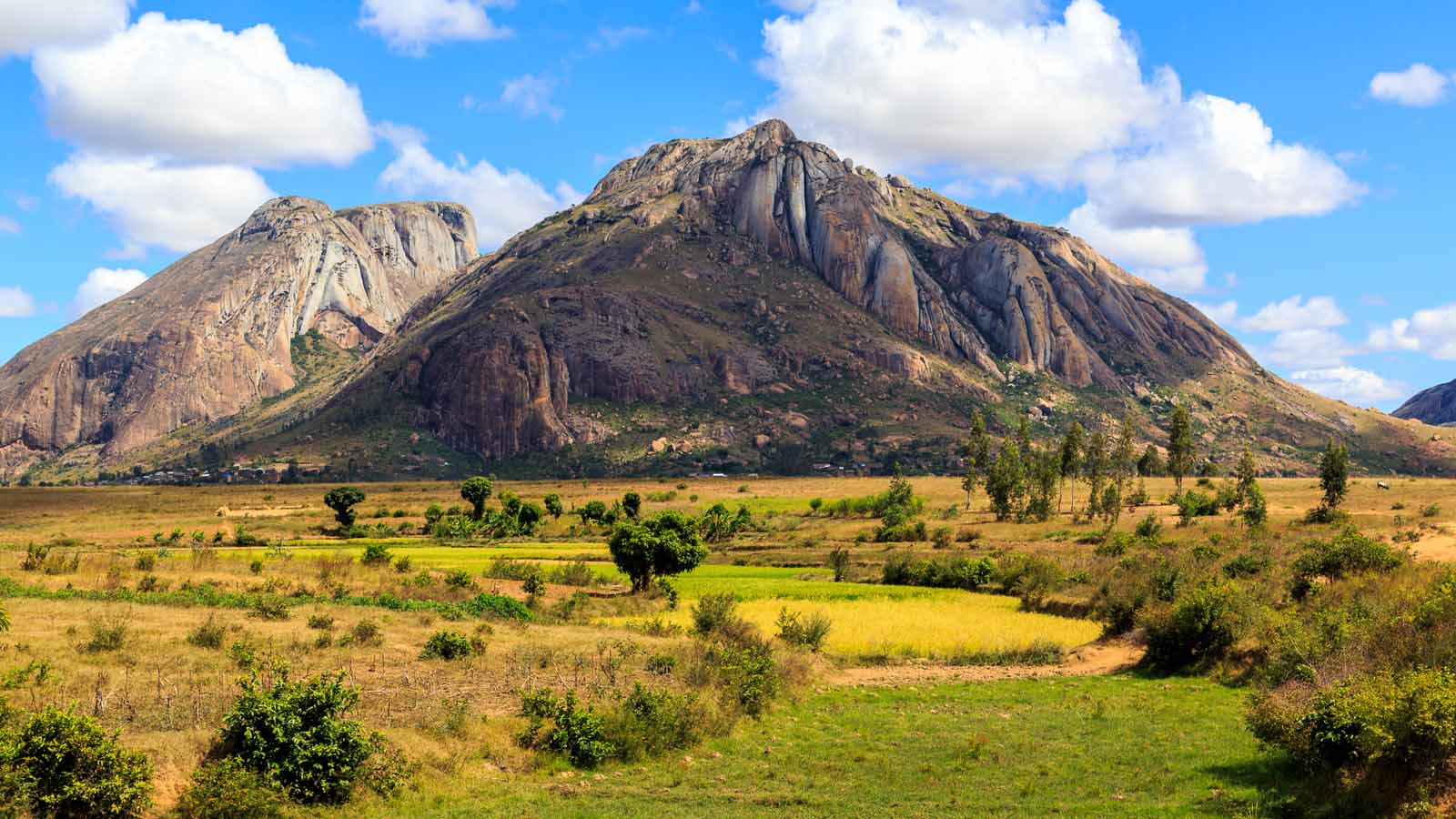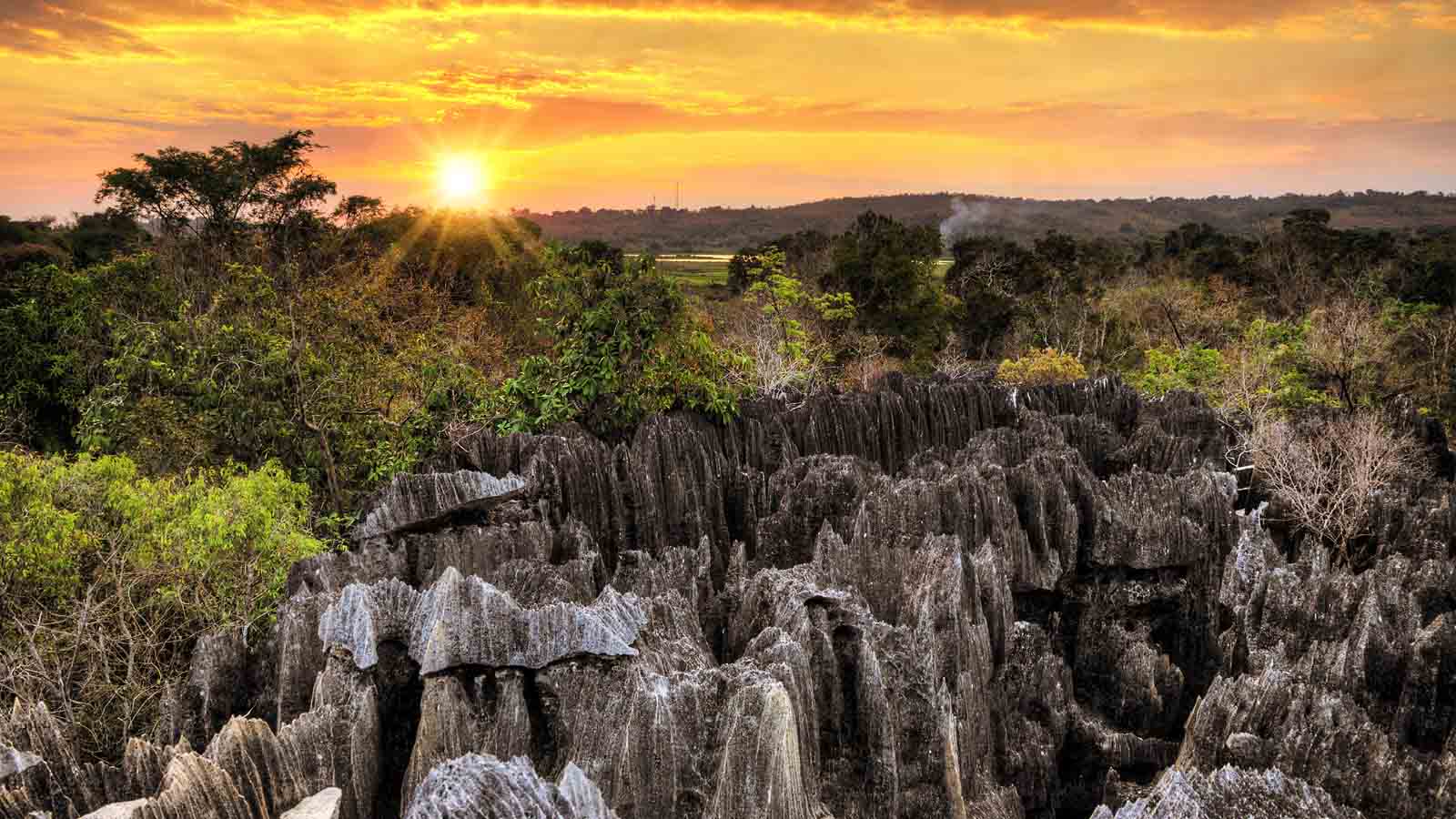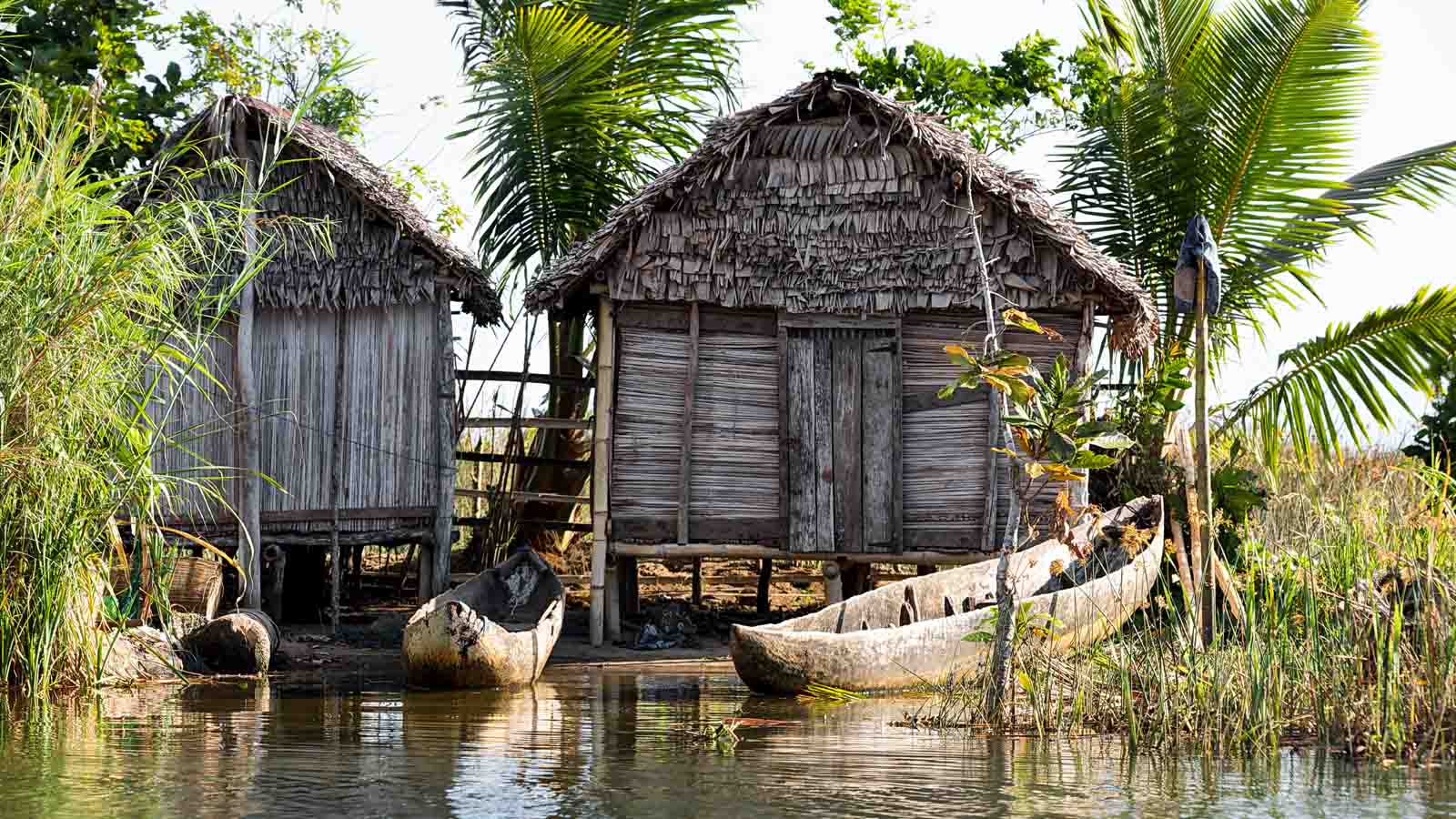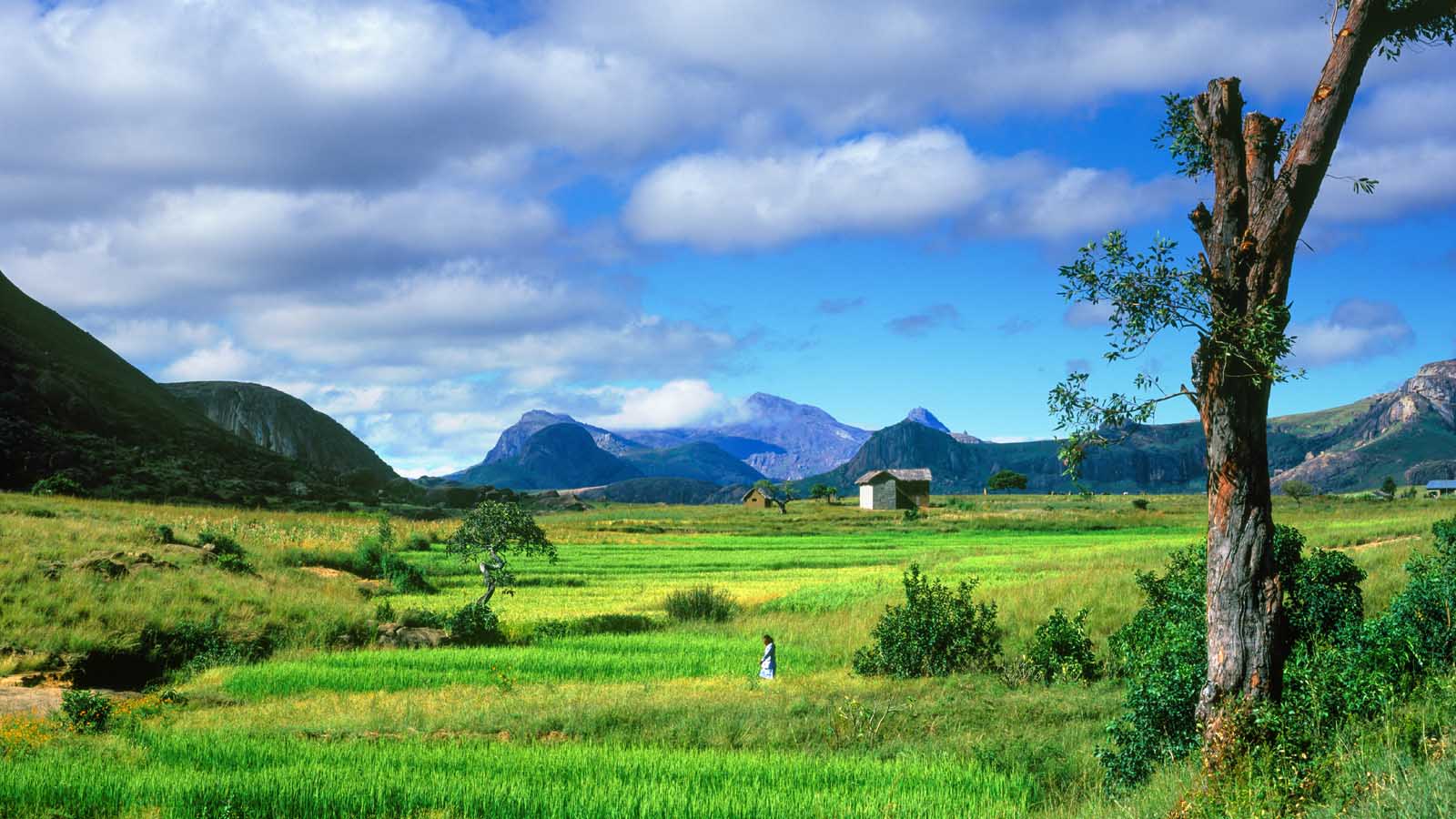OUR TOP EXPERIENCES
WHY GO ON A MADAGASCAR HOLIDAY?
Astonishing biodiversity
: For anyone with even a vague interest in wildlife, it does not get more special than Madagascar. Cast off from mainland Africa 88 million years ago, Madagascar became a veritable island ark, its residents evolving in total isolation from Africa or Asia. As a result the island boasts an enormous array of unique species found nowhere else on the planet, including the most peculiar plants and animals on Earth. The country's biggest carnivore is the ferocious tree-climbing fosa - this leopard-sized lemur-killer is more closely related to mongooses than lions or wolves. The island is a mosaic of wholly different landscapes, from highlands and forests to open savannah and semi-desert, each hosting a broad mix of habitats. Moving from the tropical rainforests of the north-east to the limestone massif of the west and on to the otherworldly spiny thickets of the south, it's hard to remember it is all on the same island. With 120 unique bird species (the most in all of Africa), it is the globes birding mecca. With 36 endemic bird genera and five endemic families, it doesn't get better than Madagascar. Beyond birds there are dozens of unique species each of bats, snakes and chameleons, several hundred species of frog, 1,000 species of orchid, up to 4,000 species of snail, and most famous of all, 80 or so species of lemur all found nowhere else. Up to 90% of Madagascar’s flora and fauna are totally unique to the island, and many of Madagascar's national parks are UNESCO World Heritage Sites.Unique culture
: Malagasy culture is a unique blend of South East Asian and African cultures that is very far removed from our own European and North American cultures. The heavy emphasis on tradition and ritual is fascinating and an intrinsic part of Malagasy everyday life.Fabulous beaches
: Nestled between the Indian Ocean and the Mozambique Channel, Madagascar offers a beautiful array of white sand beaches, azure waters and coral reefs. With a fairly underdeveloped tourism sector, if you wander off the beaten track, you will likely have this paradise all to yourself. See our blog post on why Madagascar is the new Maldives.Stunning landscapes
: With the unreal beauty of the Tsingy, lush rainforests, otherworldly spiny forests, towering baobabs, white sand beaches, mountains and plains, the red island offers one-of-a-kind landscapes that are a photographer’s dream come true.Walking
: Wildlife holidays to Africa often involve sitting in a vehicle all day. In Madagascar the majority of your wildlife viewing will be done on foot in the island’s diverse forests, getting you closer to nature. Walks range from a gentle stroll through the forest to fairly strenuous hikes through astonishing limestone formations.Safety
: Madagascar offers a gentle introduction to African wildlife holidays as there are no dangerous animals, insects or reptiles.Where is Madagascar?
Madagascar is an island off the east coast of Africa & the shores of Mozambique. For a detailed map, please see below.
For a summary of the Best places to stay in beaches and islands of Madagascar, please follow this link.
